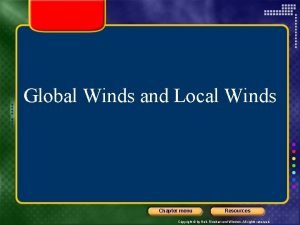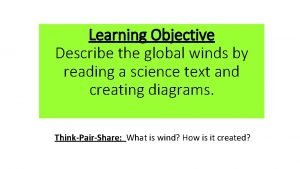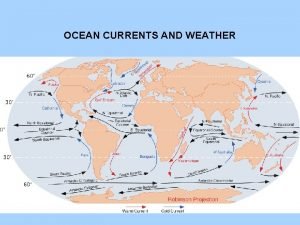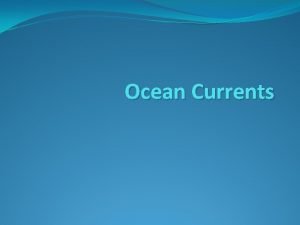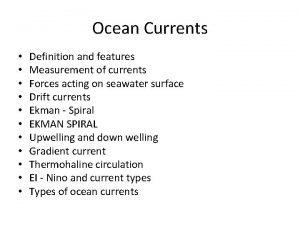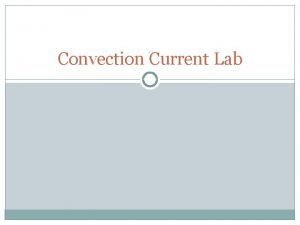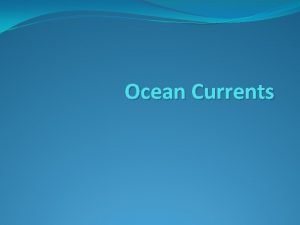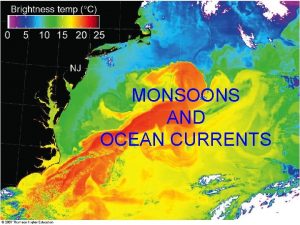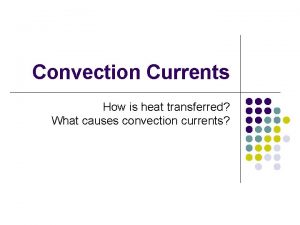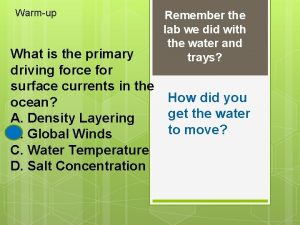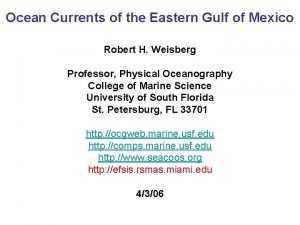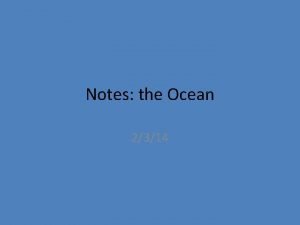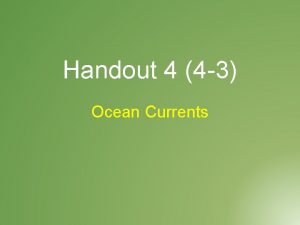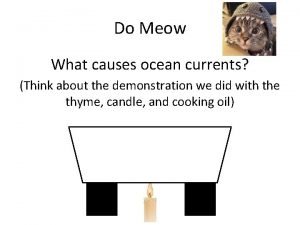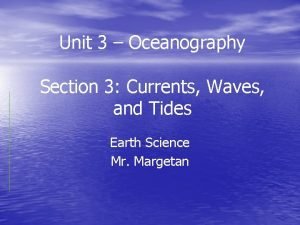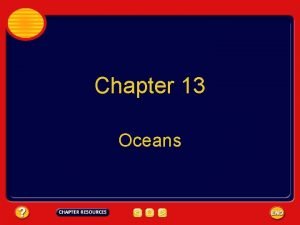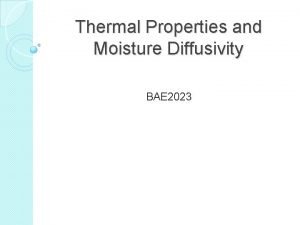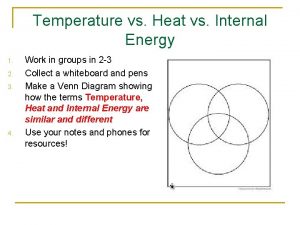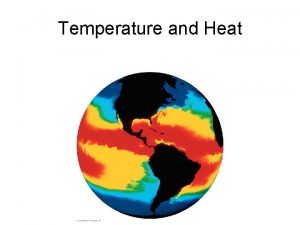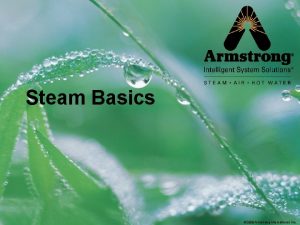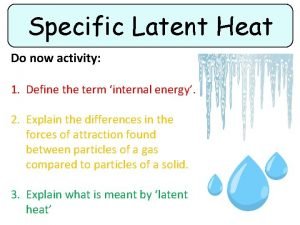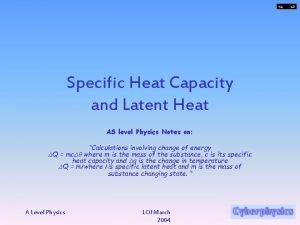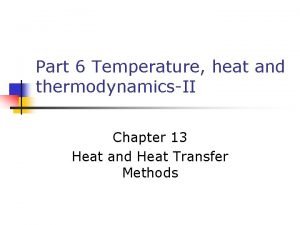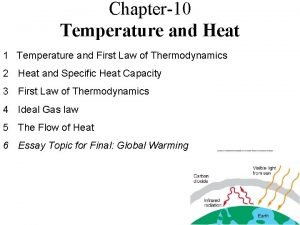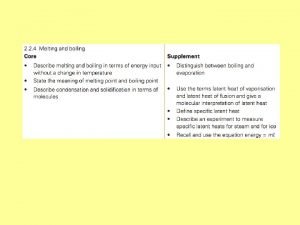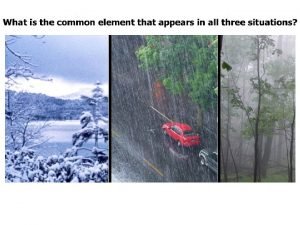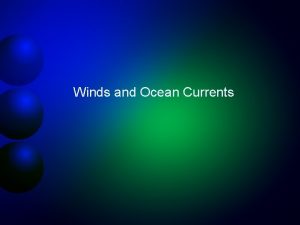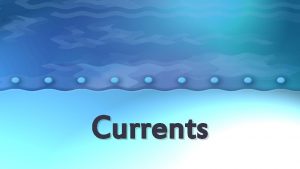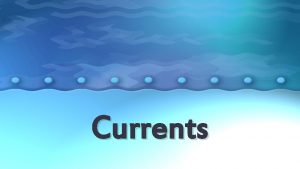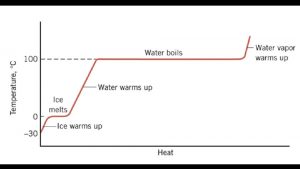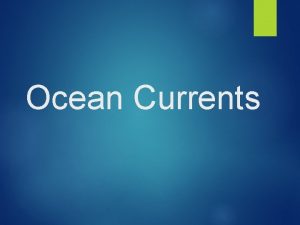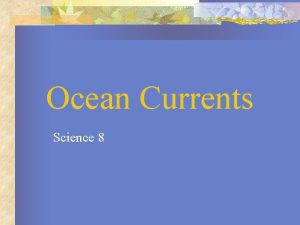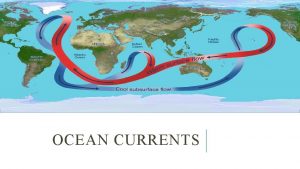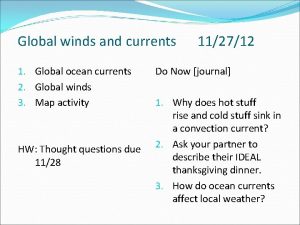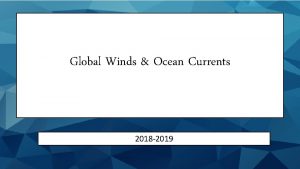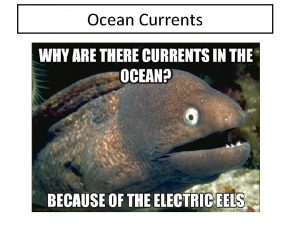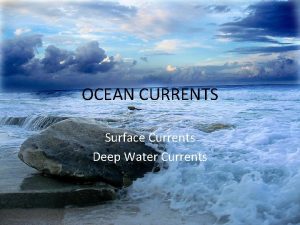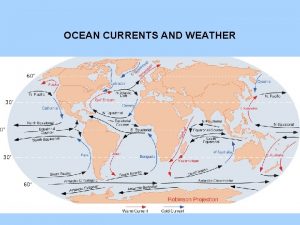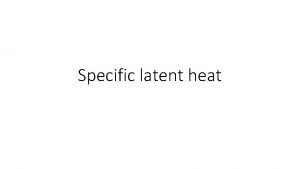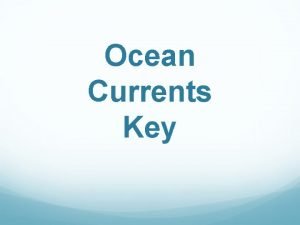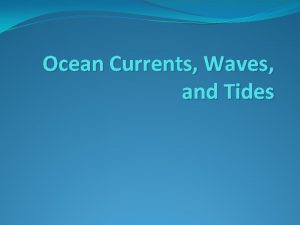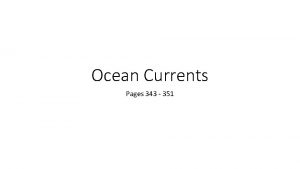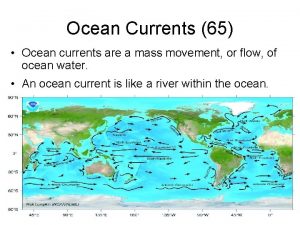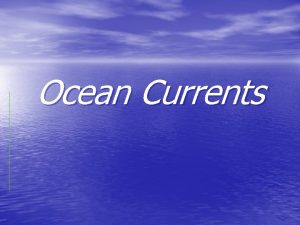Winds and Ocean Currents Latent Heat Transport 580







































- Slides: 39

Winds and Ocean Currents

Latent Heat Transport 580 cal/g Surface wind

Northern Hemisphere 60 o 30 o 0 o

Northern Hemisphere Fronts 60 o 30 o Hurricanes Something is redirecting the wind 0 o

The Coriolis Effect Due to the rotation of a spherical earth What is the circumference of the Earth? ~ 25, 000 miles How long does it take for the earth to make one rotation? 0 mi/hr 25, 000 mi at 0 o latitude 1042 mi/hr 24 hours

stationary 1042 mi/hr

The Coriolis Effect Velocity at 90 o latitude zero Velocity at equator 1042 mi hr Objects moving in the northern hemisphere deflect to the right of the direction of travel.

The Coriolis Effect Stationary Velocity at 90 o latitude zero Velocity at equator 1042 mi hr 1042 mi/hr Objects moving in the northern hemisphere deflect to the right of the direction of travel.

Northern Hemisphere 60 o 30 o 0 o The Coriolis Effect deflects the wind to the right of the direction of travel

60 o 30 o 0 o The Coriolis Effect deflects the wind to the right of the direction of travel

Surface Winds 60 o Prevailing Westelies 30 o Tropical Easterlies Equator 30 o 60 o

In the Northern Hemisphere moving objects, including air, are deflected to the right of the direction of travel In the Southern Hemisphere moving objects, including air, are deflected to the left of the direction of travel

1042 mi/hr stationary

The Coriolis Effect Velocity at equator 1042 mi hr Velocity at 90 o latitude zero Objects moving in the southern hemisphere deflect to the left of the direction of travel.

60 o 30 o Equator 30 o 60 o In the Southern Hemisphere moving objects, including air, are deflected to the left of the direction of travel

60 o 30 o Equator 30 o 60 o

descending Calm air rising descending Calm air

Hurricane Track 30 o 0 o

30 o

Sailing, Sailing… Westerlies 30 o Trade winds (easterlies)

Winds and Ocean Currents

Ocean Surface Currents Forces 1. Solar Heating (temp, density) 2. Winds 3. Coriolis

Solar Heating and Density Mass Volume (g) (cm 3) Water Expands as it is heated

Solar Heating Heat expands water near the Equator, increasing its volume and creating a bulge Equator

Solar Heating Heat expands water near the Equator Increasing its volume and creating a bulge N Water flows toward pole equator S Water flows away from equator Water flows toward pole

General Circulation pole Ocean equator Earth Sun’s rays

General Circulation (North) 1. Solar Heating 2. Winds 3. Coriolis 30 o Surface Water equator

Winds Guide the Direction of Surface Water Winds blow to the west between 0 o and 30 o latitude. 30 o 0 o

General Circulation (North) 30 o wind equator Surface Water

The Coriolis force deflects objects To the right of the direction of motion.

Winds plus Coriolis Force East winds blow water to the west Coriolis deflects water to the right (east). 30 o East wind equator

Winds plus Coriolis Force Above 30 o, westerlies push water to the east. Coriolis deflects water to the right in the direction of travel (east). West wind 30 o East wind equator

Water encounters land is deflected north and south. The bulk is deflected to the south, and Coriolis deflects it to the right Below 30 o, moving water encounters east wind and is moved to the west West wind East wind

Atlantic Gyre

Temperature/Energy Transfer cool warm cool

Unusual Example of Heat Transport

Ireland Gulf Stream England Spain

Ireland England Spain cornwall

Next: Ocean Fundamentals
 Formula specific latent heat
Formula specific latent heat How does the air move in a sea breeze?
How does the air move in a sea breeze? Which blow over long distances?
Which blow over long distances? Westerlies
Westerlies Local winds and global winds
Local winds and global winds What is deep current
What is deep current Earth's rotation makes global winds curve this is called
Earth's rotation makes global winds curve this is called Ocean currents waves and tides
Ocean currents waves and tides Ocean currents and weather
Ocean currents and weather Coriolis effect vocabulary
Coriolis effect vocabulary Ocean currents definition
Ocean currents definition Convection currents in the ocean
Convection currents in the ocean Climate types brainpop
Climate types brainpop Ocean currents
Ocean currents Coriolis force effect on ocean currents
Coriolis force effect on ocean currents Ocean currents
Ocean currents Cenozoic mammals
Cenozoic mammals What causes convection?
What causes convection? What is the primary driving force of surface-ocean currents
What is the primary driving force of surface-ocean currents Rubber ducks ocean currents activity
Rubber ducks ocean currents activity Ocean currents gulf of mexico
Ocean currents gulf of mexico What are ocean currents
What are ocean currents Surface ocean currents
Surface ocean currents What are ocean currents
What are ocean currents Ocean currents
Ocean currents Ocean currents
Ocean currents Ocean currents
Ocean currents Coonvection
Coonvection Chapter 15 ocean water and ocean life answer key
Chapter 15 ocean water and ocean life answer key Dimensions of thermal conductivity
Dimensions of thermal conductivity Latent heat
Latent heat Latent heat of lead
Latent heat of lead Latent heat of water btu/lb
Latent heat of water btu/lb Specific latent heat of fusion formula
Specific latent heat of fusion formula What is latent heat capacity
What is latent heat capacity Unit of latent heat
Unit of latent heat Specific heat unit
Specific heat unit The unit for specific heat capacity
The unit for specific heat capacity Solid to liquid
Solid to liquid Latent heat of fusion
Latent heat of fusion




